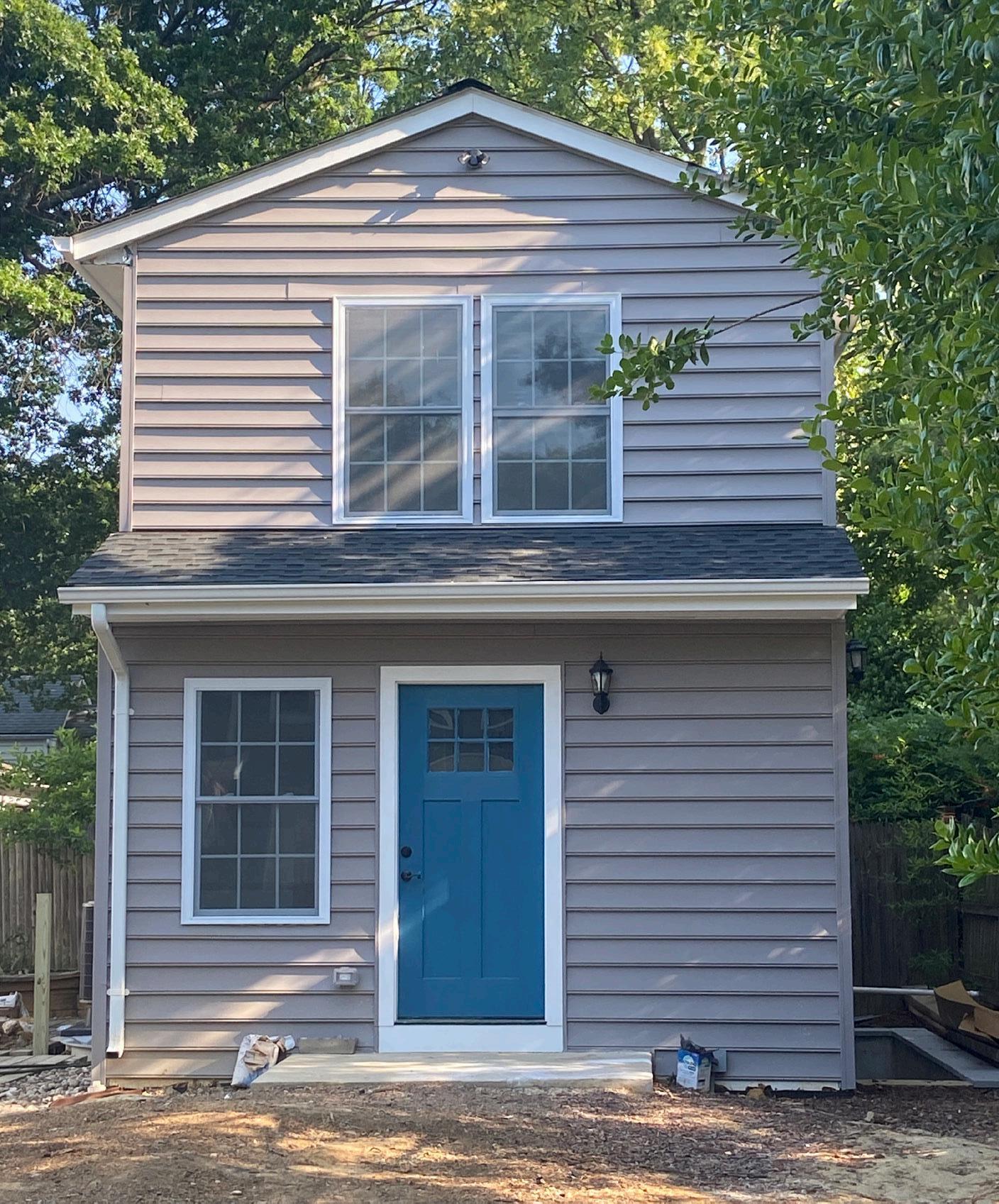
6 minute read
Small Homes: Big Impact
BY SUSANNAH MOORE PHOTOS BY BETH LAWTON
In a city as densely populated as Alexandria, where the average price for a home is close to $400 per square foot, space is at a premium.
As Alexandria’s population increases and family dynamics shift — from couples starting a family, adult children moving home after college and elderly parents needing help as they age — the demand for additional space is only grows.
One of the solutions to the demand for living space is the rise of accessory dwelling units (ADUs), commonly referred to as “granny flats” or “in-law apartments.”
The City of Alexandria defines ADUs as secondary, independent living units that typically have a separate kitchen, sleeping area and bathroom. ADUs can be attached to an existing structure or internal, meaning they are an addition to or located within a home, or they can be a completely detached building located on the same property as a primary residence.
ADUs are increasing in popularity across the country, a trend accelerated by the pandemic, when more people found themselves stuck at home.
Since Alexandria passed its ADU policy in January 2021, 43 ADUs have been approved in the city. Of those ADUs, 31 are detached structures and 12 are internal.
“We’ve had a pretty good uptick of people who have applied to use the ordinance,” explained Mayor Justin Wilson, who was a proponent of the ordinance when it came before city council. “From an interest perspective, I think it shows that there was a real pent-up demand for this among a lot of property owners.”
The ordinance faced its fair share of opposition from residents who were afraid the policy would flood the city with ADUs, causing increased density and eventually leading to the demise of single-family zoning. Supporters of the policy emphasized that ADUs can be a tool to help address the affordable housing crisis in the city, by providing opportunities for rental income for homeowners and space for live-in childcare, recent graduates, seniors and people with disabilities.
Wilson admitted that 43 may not seem like a high number, but he is confident that ADUs are one piece in the larger puzzle of housing affordability.
“One of the challenges with housing policy is that any proposal that comes forward, the immediate answer is ‘Well, that’s not going to solve the problem,’ and the reality is that no one thing is going to solve the problem. The problem is so enormous that if there was one solution we would have done it a long time ago, but every little bit helps,” Wilson explained.
It seems like the debate surrounding ADUs lessened since the ordinance passed, but it will continue to pop up as the city considers further reforms to single-family zoning as part of the Zoning for Housing/Housing for All initiative that seeks to make housing more accessible, affordable and available to all Alexandria residents.
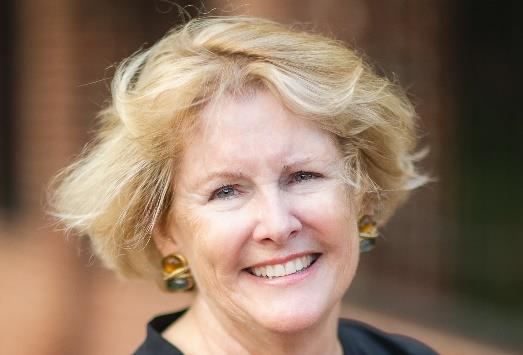
Building
Del Ray resident David Scavone was one of the earliest homeowners to go through the ADU approval process to convert his detached garage from a home office to a separate living space now that he is getting close to retirement. Scavone figured converting it into an ADU would increase the value of the property, while also giving him the flexibility to age in place or rent it out for additional income.
Because of the garage’s proximity to the property line, Scavone had to go through the variance process before he could even start the ADU process. He admitted that being one of the first ADUs to be approved had its unique challenges.
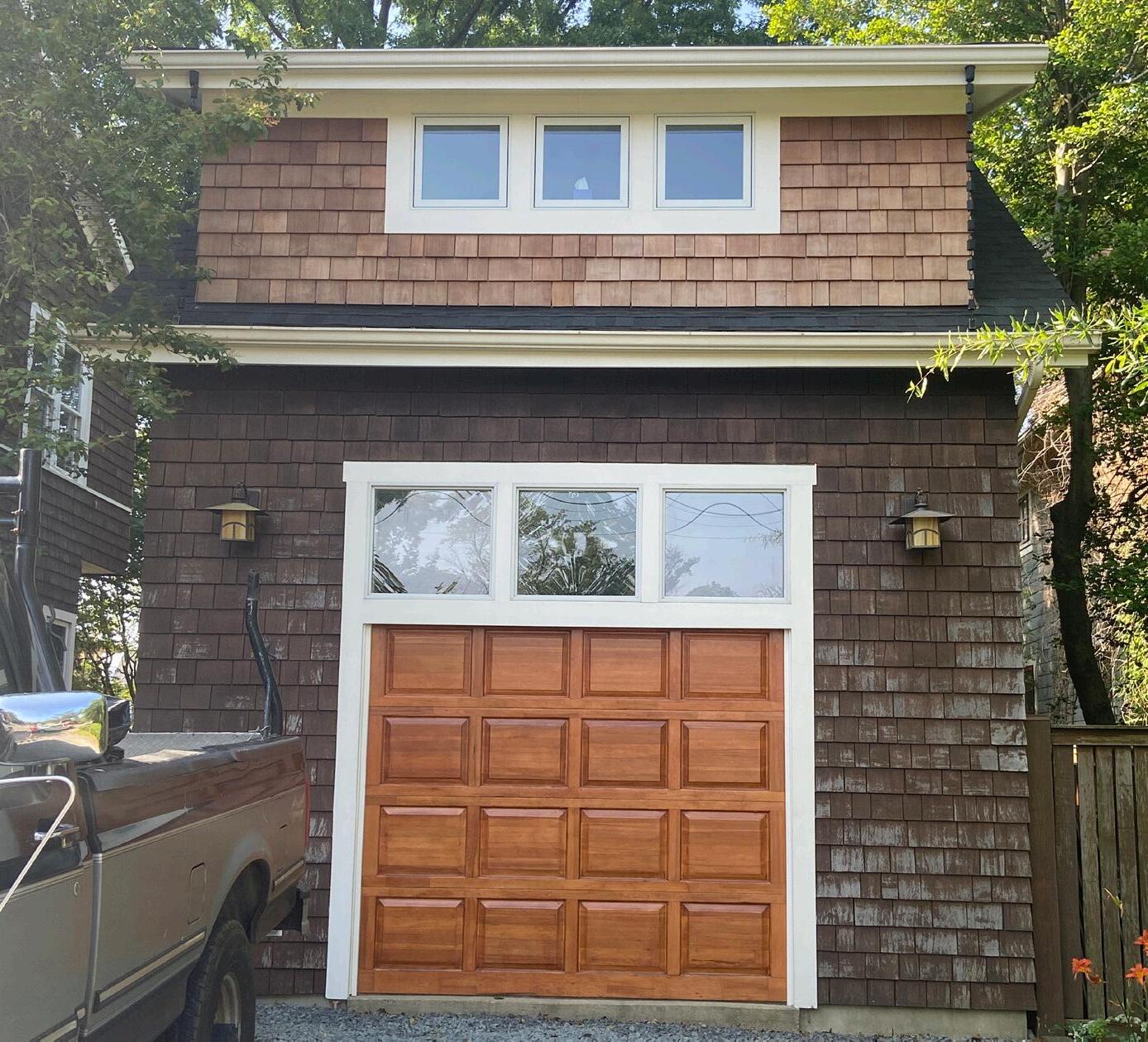
“I would say that the staff and the city, everybody was very friendly and very professional, but they were still figuring things out,” Scavone explained. “It was just all so new.”
Because the garage already had plumbing, electric and other utilities, the space just needed a kitchen. He hired MHD Builds to create some drawings for the city and complete the work.
Scavone says neighbors have been supportive of the garage-to-ADU conversion.
“I can’t tell you how many people in the neighborhood have just had kids or something who are saying ‘Hey, is [the ADU] available? My in-laws are coming in for a few weeks and it’d be great if they could rent your place and just walk down the street’ because they don’t have room for them.”
Another Del Ray resident, Ryan (who asked that his last name be withheld), is currently in the permitting phase for a detached ADU and has also found neighbors to be supportive and positive.
He and his wife were motivated to start the process during the pandemic when they found themselves both working from home with two young children. “We needed more space for work and play,” he explained.
When asked what the approval process was like, Ryan said, “The process has been slow but steady as the city has been very cooperative and helpful.”
Finding an architect, builder and contractor wanting to take on an ADUonly job was more of a challenge, but they were able to find someone with a little bit of experience with similar projects.
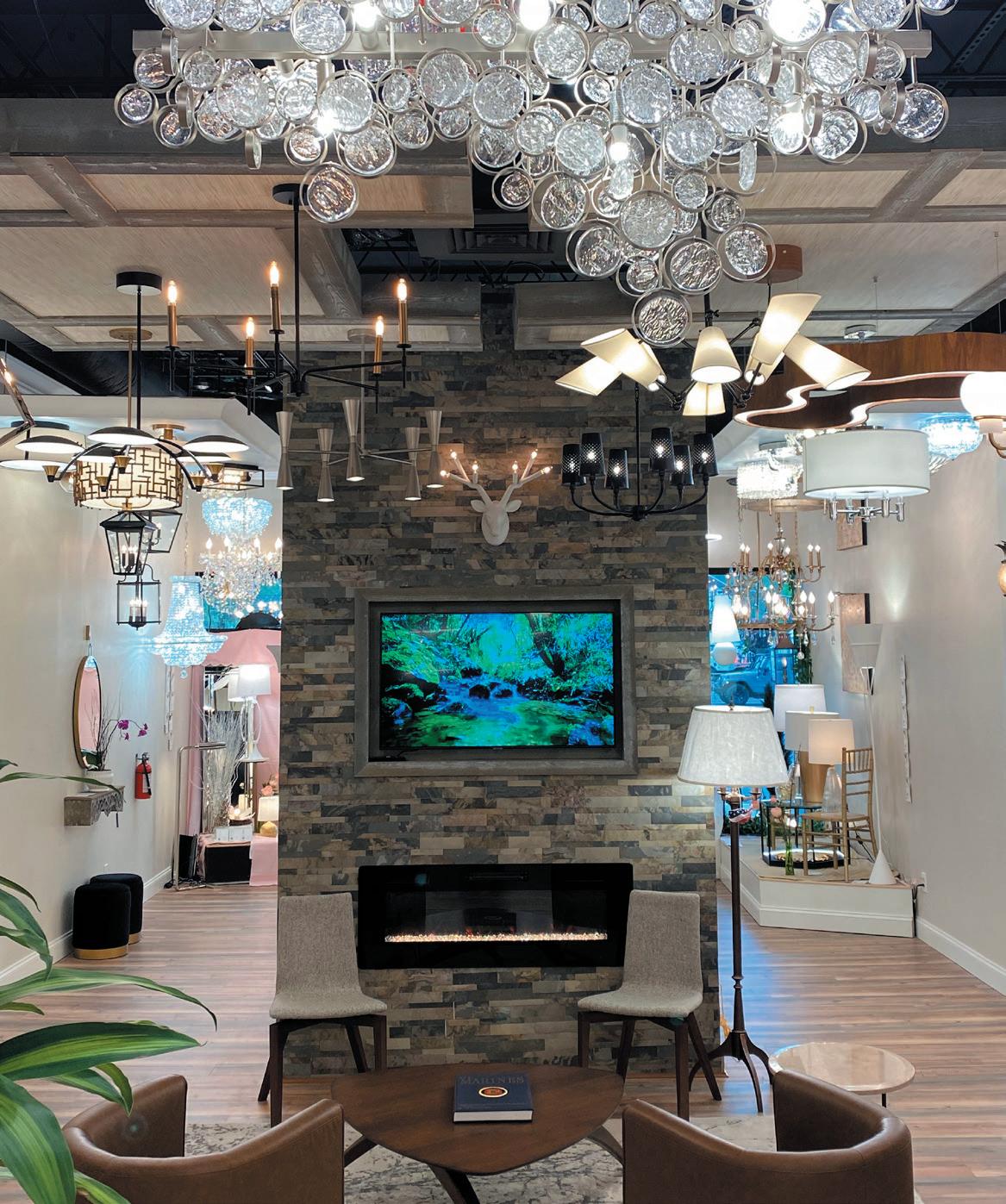
Another city resident, speaking anonymously, said he has had a slightly different experience with the ADU process. He and his family were motivated to redo a level of their home to create additional cooking and food storage space while at the same time creating a more functional space for a live-in family member with a chronic illness. Because the changes would be made within the home’s existing footprint, it is an internal ADU.
He faced no opposition from neighbors, but he found the ADU approval process disappointing. “Our reno work should not have needed an ADU permit, but according to City staff, any cooking device — in our case, a wall oven without a cooktop, but apparently even the mere possibility of setting a microwave on the counter — is not allowed under the single-family zoning ordinance without an ADU,” the resident said.
At the same time, he said, staff ignored the part of the ordinance (section 2-141) that makes considerations for dwelling units that share HVAC with the main house and are not separated by walls and doors.

These complications delayed the renovation by several months and increased the cost of the project, he noted. “We had to find and hire an expensive design-build firm with ADU experience to ensure that we could navigate the City's bureaucracy without even more delays.”
Designing
There are certain considerations homeowners should keep in mind when considering an ADU. Cody Stadler is an architect who has worked on seven different ADUs in the area. “In recent years, there has been a notable shift to multigenerational living in our region, and this has created an interesting opportunity for architects to work with homeowners and creatively design additions or standalone structures to suit their needs,” Stadler explained.
One of the key features Stadler says that ADUs should have is accessibility for wheelchairs and for older adults with mobility issues. “These ADUs will likely serve as the final home for the older generation, so designing a space that is wheelchair accessible with accommodations for zero-barrier living is very important,” Stadler said.
Stadler was quick to point out that building an ADU is a worthwhile but complicated process, and homeowners should understand that ahead of time. Each jurisdiction has its own regulations when it comes to ADUs which, he said, “requires working with a skilled and technically comprehensive architect to determine what is feasible and allowable.”
Stadler says it can take over a year for an ADU to be designed and built which requires patience on the part of the homeowner.
According to Architectural Digest, homeowners should keep in mind that designing small spaces can end up being more expensive per square foot. It is also essential to keep flexibility and functionality in mind when designing an
ADU because of the various uses it could take on over the course of time.
ADUs should be comfortable for any resident, whether it’s for a nanny, the returning college grad or granny.
“As ADUs have become more prevalent, the most common design issues that I have seen are related to privacy, comfort, and accessibility,” Stadler said. Visuals of the ADU are also something to consider, especially if you as a homeowner want to maintain curb appeal and stay on your neighbors’ good side.
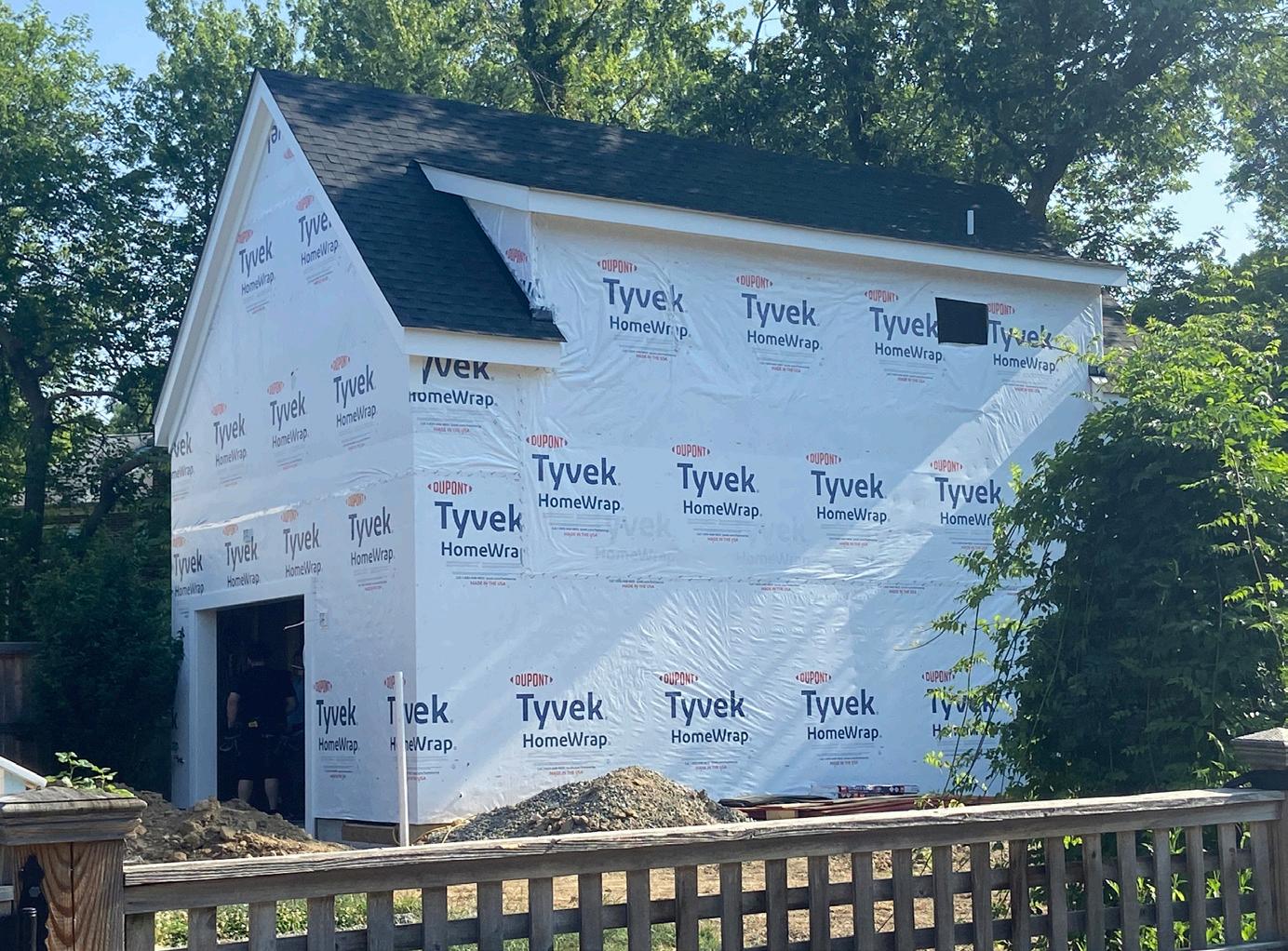
“Ensuring that the accessory dwelling and the primary dwelling have a harmonious design aesthetic is crucial to the success of a project,” Stadler explained. The ADU shouldn’t be bigger or more prominent that the main dwelling.
Selling
Micki MacNaughton, a Realtor with McEnearney Associates, said additional square footage or living space is always a win when it comes to home values, and ADUs are one way of achieving that.
“We work with a lot of buyers who either need live-in child care or would like live in child-care or even have younger siblings that might be moving back from college,” MacNaughton said. “I think that ADUs are becoming more popular because it allows homeowners to add additional square footage where they couldn’t have before.”
MacNaughton says that one of the trade-offs of ADUs, specifically detached ones, is that they take away yard space, which some prospective homebuyers with young kids or pets may not find desirable. She also said that another way an ADU could negatively impact a home is from an aesthetic perspective if it is situated toward the front yard or blocks light going into neighboring homes.
Circling back to Mayor Wilson, he currently has no plans to build an ADU at his own house. Wilson said he considered it when he and his wife were taking care of his in-laws, but he found the lack of room on their property to be a challenge. Instead, Wilson admits he is considering (thanks to his wife) looking into allowing residents to keep chickens within city limits.







